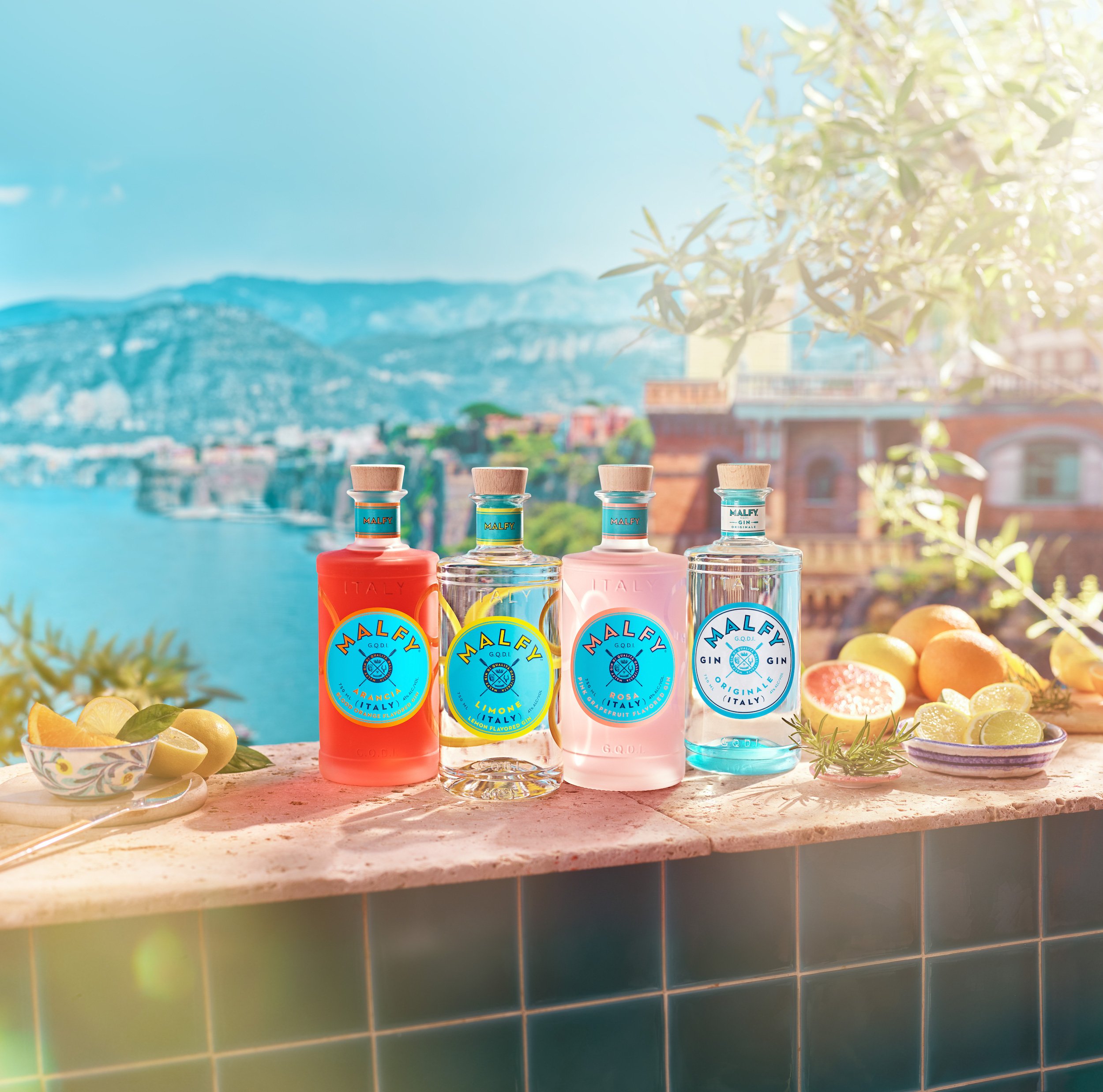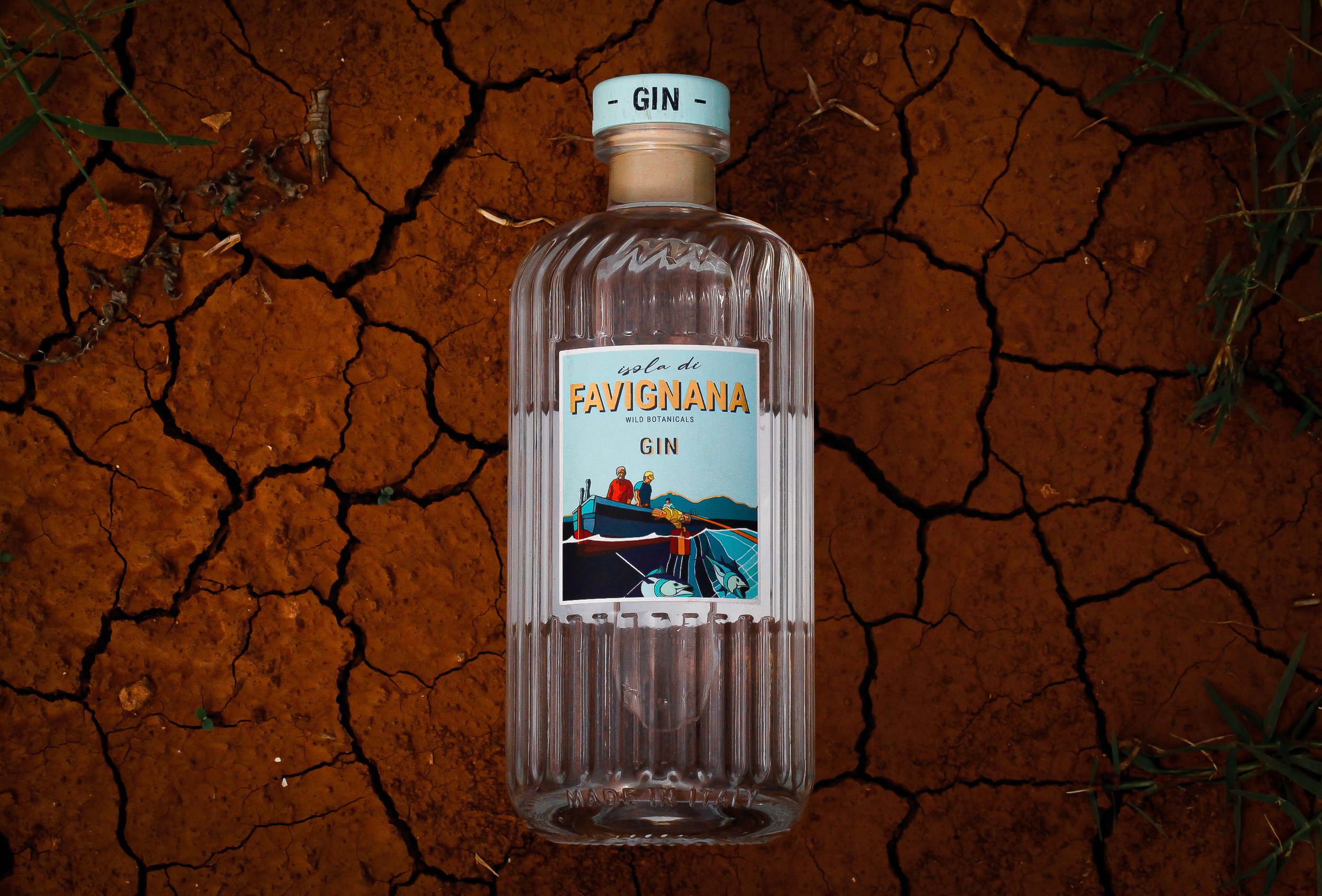4 Reasons Why Italian Artisan Gin is on the Rise
Perhaps you’ve noticed the recent uptick in Italian gins while perusing your local gin aisle. One sip could transport you to the Amalfi Coast, or an island off Sicily, or the Tuscan countryside. Go to Italy and you’ll find literally hundreds of locally produced gins. What is behind this explosion of evocative artisanal spirits from a country we associate more with wine production and distilling?
Suitable Native Botanicals
Italy’s Mediterranean climate suits many of the typical flavors found in gin, plus some extras. Malfy Gin, for instance, focuses on native citrus (lemons, pink grapefruits, and blood oranges) from the Amalfi Coast to differentiate their product. Says Kerri Owen, Malfy’s Director of Marketing, “Italy is surely a special region for making gin due to its abundance of magical ingredients growing in regions famous for their gardens and agriculture – the Mediterranean climate is superbly suited for citrus, which could be a main reason for the renewed interest in gin distilling.”
Much of the world’s juniper, which provides the universal flavor note in gin, comes from Tuscany and Umbria. Says Rugerro Raymo, CEO of Liguria’s Portofino Gin, “distillers buy their juniper berries from Tuscany, or buy the Tuscan trees, because it’s known that they’re the best.”
Engine Gin is a new organic player packaged in a recyclable aluminum half liter screw-cap “oil can” to reflect founder Paolo Dalla Morra’s love of motocross and car-racing. Distilled from Piemontese organic wheat, its botanicals include juniper from Tuscany, sage leaves from Piedmont, lemons from Sicily, licorice roots from Calabria, and damascena rose petals from Piedmont, all mixed with Alpine water from Monviso. Says Dalla Morra, “One day, while I was working on my bike in the garage in Barbaresco drinking a cup of the traditional Langa digestive with hot water, lemon peel and sage leaves, I thought it would be interesting to reproduce those very flavors in an alcoholic version and taste it in a long drink.”
Inspiring Terroir
Taking the native flavors one step further introduces the idea of terroir, the notion that spirits and other local products take on a “taste of place” specific to the region where they are from. The Italian coast seems to be a source of inspiration for distillers with many using seawater. Nino Campo, who recently launched Isola di Favignana Gin from his home island off the Trapani coast, told us “I like to think that is romantic way of offering to the world the opportunity to taste, with a sip of gin, our land, our sea, our mountains or volcanoes, with the multitudes of botanical species and soils present. As with wine, the soil and the surrounding environment are fundamental for the raw material. That’s why…we chose to become farmers and not distillers. We started a farm where we grow part of the botanicals that are in our recipe, the ones that give our gin the essence of our land and our sea.” The 600 native and wild herbs and flowers, “mixed with the salty breeze of the Mediterranean Sea, have a special taste and scent. Once we chose the name of our gin it was almost an obligation for us to get our hands dirty and focus on terroir.”
Historical Precedent
Legend has it that the earliest instance of modern distilling happened in mid-1100’s Italy. Says Raymo, “Not many people know that the distillation process as we know it today was invented at the University of Salerno, so there is a big link between Italy and gin.”
Dalla Morra agrees. “Italian gin is not a novelty, on the contrary it has very ancient roots. The first testimonies of juniper distillates, initially used for curative purposes, date back to 1500, to the Renaissance. Add to this that our country, for centuries, has been the territory where the most famous international companies producing gin buy their botanicals: from Tuscan juniper to spices, to Mediterranean citrus.”
Campo adds, “The distillation process is not something, as we all know, invented just in the last few years or anyway a process just focused on juniper. Italian master distillers have always played an important role in the development and innovation of the art of distillation. That’s why I think that our territory has many opportunities in terms of distillation…You have different masters distillers with a deep knowledge and capacity, passionate [about] what they do. In this historical moment for gin, many people in Italy, like us, choose to make their own product,” each with their own distinctive characteristics.
“We are witnessing a real boom in Italian gin,’ says Dalla Morra. “Currently there are about 800 labels. Only 10 years ago at the first edition of The Gin Day, the main Italian gin fair, there were only 4-5 distillates made in Italy.”
An Evolving Drinking Culture
Italians traditionally drank spirits such as grappa, neat. Most Italian gins can also be enjoyed neat. But cocktails are also on the rise. It’s tempting to assume that the incredible popularity of the negroni is partly responsible for the rise in Italy’s gin production, but our sources agree that the gin & tonic is more the spark to the flame. Says Campo, “In terms of consumption, gin tonic still tops the charts.” Raymo says that while they see the impact of the “mixology culture,” especially on the American consumer, when marketing spirits “You have to make strategies and adapt them–they have to be tailor made country by country. In the US it’s about the negroni…the martini, but in Europe it’s more about the gin and tonic.” The increase in female gin drinkers and the rise of the Italian Gintoneria–gin and tonic bars inspired by their Spanish predecessors, heavily impacts the increase in Italian’s interest in gin and its local production.
Italians typically don’t drink without eating and many Italian gins and certainly the gin and tonic are well suited to pair with food. The rise of the aperitivo has no doubt added to the popularity of gin. Will the Italian tradition of enjoying a nibble with cocktails or gin served neat expand beyond the borders of Italy? We can only hope it will.





